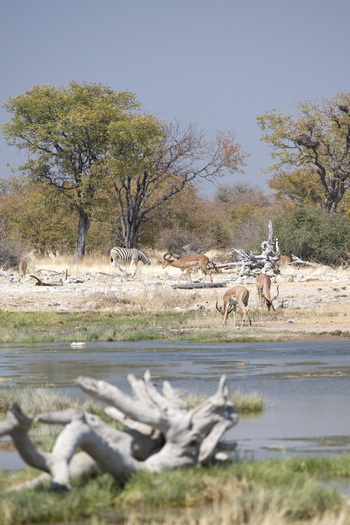Harnessing biodiversity for Namibia's economy
Biodiversity Economy in Selected Landscapes
-
Commissioning Party
German Federal Ministry for the Environment, Nature Conservation, Nuclear Safety and Consumer Protection (BMUV)
-
Country
-
Lead executing agency
More
-
Overall term
2019 to 2024
-
Products and expertise
Climate, environment, natural resource management

Context
In Namibia, 70 per cent of the population depends on biodiversity and natural resources such as bush biomass to earn a living. The Namibian Community-Based Natural Resources Management (CBNRM) programme is seen internationally as a prime example of the conservation and sustainable use of biodiversity. However, this is threatened by population growth, environmentally damaging agriculture, climate change and the conflicting interests of humans and wild animals.
In order to better preserve the country's protected areas, the Fifth National Development Plan (NDP5) aims to expand the ‘biodiversity economy’. This envisages harnessing biodiversity for the economy – for example, through green tourism.
Objective
Protected areas and agricultural land are used effectively to conserve biodiversity and for the economy. Public and private stakeholders are working together to build the biodiversity economy.
Approach
The project supports Namibia in implementing the biodiversity economy in selected landscapes. The concept can be expanded to other Namibian landscapes and, through the cross-border national parks, to other countries in the region.
By trialling selected economic instruments – such as payments to protect ecosystems – the project will enable Namibia to learn lessons and implement them across the country. In addition, the project is introducing guidelines with tried-and-tested procedures, for example for the mining industry. Here, case studies are used that are designed for the entire industry.
National conservation objectives also help preserve the biodiversity of entire landscapes. They are accompanied by measures that promote environmentally friendly production and consumption. For example, lodges receive products from the region, and campsites and hostels are developed in an environmentally friendly way.
Last update: November 2023





